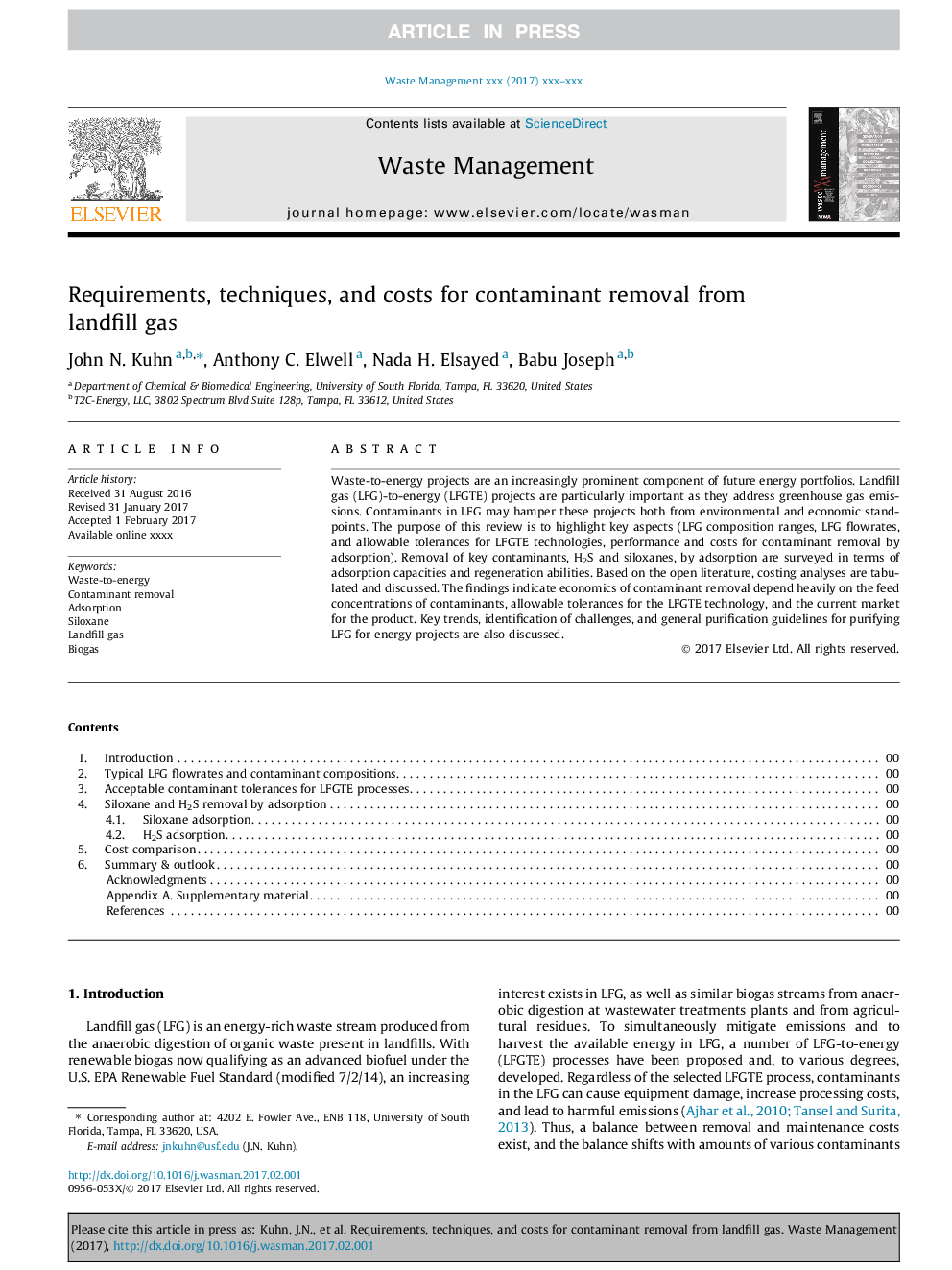| Article ID | Journal | Published Year | Pages | File Type |
|---|---|---|---|---|
| 5756870 | Waste Management | 2017 | 11 Pages |
Abstract
Waste-to-energy projects are an increasingly prominent component of future energy portfolios. Landfill gas (LFG)-to-energy (LFGTE) projects are particularly important as they address greenhouse gas emissions. Contaminants in LFG may hamper these projects both from environmental and economic standpoints. The purpose of this review is to highlight key aspects (LFG composition ranges, LFG flowrates, and allowable tolerances for LFGTE technologies, performance and costs for contaminant removal by adsorption). Removal of key contaminants, H2S and siloxanes, by adsorption are surveyed in terms of adsorption capacities and regeneration abilities. Based on the open literature, costing analyses are tabulated and discussed. The findings indicate economics of contaminant removal depend heavily on the feed concentrations of contaminants, allowable tolerances for the LFGTE technology, and the current market for the product. Key trends, identification of challenges, and general purification guidelines for purifying LFG for energy projects are also discussed.
Related Topics
Physical Sciences and Engineering
Earth and Planetary Sciences
Geotechnical Engineering and Engineering Geology
Authors
John N. Kuhn, Anthony C. Elwell, Nada H. Elsayed, Babu Joseph,
